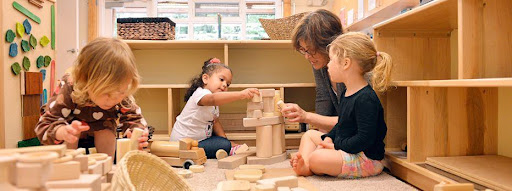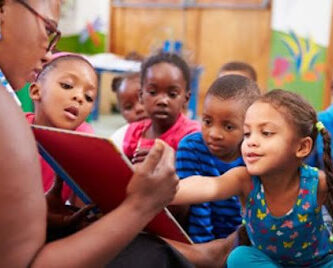
17 Nov Managing Preschool Classroom Transitions with Skilled Substitute Teachers
Managing Preschool Classroom Transitions with Skilled Substitute Teachers
We’ve tried them all right? Lights off to grab attention. A witty slogan or catchprase to re-engage. A song or chant to command the room. Transitions between activities or from one space to another is something we do countless times in a day, but educators know, this is a tenuous and often stressful time in the classroom.
We know the more time we spend transitioning from one thing to the next, the less time we are spending in creative play. The most seasoned teachers with well-established routines still struggle at times to move from one activity to the next, let alone substitute teachers who are less familiar with the classroom they are in. So, how does a skilled sub navigate transitions effectively?
Preschool Classroom Transitions Strategy 1: Get creative!
Creative transitions are a great way to keep children engaged when moving into non-preferred activities or when children are having difficulty. Try to find ways to engage the children that might be different from what they are used to. Instead of turning off the lights, quietly go to small groups and prep them for the transition.
“My friends at the writing center, in 5 minutes we are going to clean up and head outside. Everyone on the carpet, in 5 minutes we are going to clean up the blocks and go outside.”
This also helps identify in a smaller, more manageable setting the children who are having trouble with the transition. Maybe you have a little song or clapping pattern you created. Try it with this new group. It might look or sound like this:
“My name is Ms. Sam and I’m excited to spend the day with you! When you hear me clap my hands like this (clap, clap, clap), you freeze like a popsicle and get ready to listen to something I am going to share with you. Ready to practice?”
This strategy may take some time to employ and perhaps even challenge you to step out of your comfort zone, but if it helps get the kiddos ready to move on, it’s worth it.
PRESCHOOL CLASSROOM TRANSITIONS Strategy 2: Be flexible.
The children are already in a different routine because the presence of a new person brings change. The sound of your voice, the way you move through the classroom, the way you sing (or don’t!), it’s all new to them. Maintaining the exact classroom routine might be difficult. It’s better to mitigate this struggle by walking in with flexibility in mind. It might look or sound like this:
”You all are having such a fun time playing with the musical instruments and we are supposed to begin circle time, but let’s keep making music for 5 more minutes, okay? We can have a shorter circle time today.”
This is a fairly low stakes way to allow for creative engagement to flourish while still respecting the classroom flow and routine.

PRESCHOOL CLASSROOM TRANSITIONS Strategy 3: Stay focused.
Stay focused on the goal you are working toward with whatever directive you are issuing. If your goal is to get the children to clean up and go outside, then allow your efforts be to that effect. You tell everyone it’s time to clean up to go outside and kiddo 1 is begging you to continue playing with the trucks. Kiddo 2 abandons their mess to go potty and kiddo 3 falls down in total despair. It would be easy to lose focus and get caught up in the chaos of the transition. Instead, renew your focus on the goal of cleaning up and getting outside. It might look or sound like this: (to kiddo 1)” There are toy trucks outside too. Let’s clean these up and continue playing with the outside trucks.” (Kiddo 2) “Once you have finished, I’d like to see you put the books on the bookshelf; we can wait for you to help clean up.” (Kiddo 3) “It feels hard to stop playing, but we will have more fun once we get outside. Would you like to help clean up the dinos or the crayons?” This strategy in combination with positive guidance helps to keep everyone on track and in the routine rather than caught up in the nuances of the transition.
CONCLUSION
Next time you’re in a new (to you) classroom, try these strategies to help lessen the time spent focusing on the event of transitioning and more time on the productivity of the classroom.

Contributing Expert Author
Samantha Reeves, M.A.
Samantha has over 25 years of experience in the field of child development. She has worked in all manner of professions as they relate to children including beginning her career as a floater teacher with 3 units, to a multisite center
regional director, and most recently, a professor in the Child and Adolescent Studies department at CSUF.
Samantha earned her B.S. at Cal State Fullerton in the same department she would later instruct in. She has a M.A. in Clinical Psychology from Pepperdine University where she focused her research on attachment theory and attachment related disorders.
Samantha lives in Anaheim Hills with her husband and 4 children. She recently made the decision to put her teaching career on pause to stay home with her kids, but plans to return to the classroom in some format in the future.


Sorry, the comment form is closed at this time.